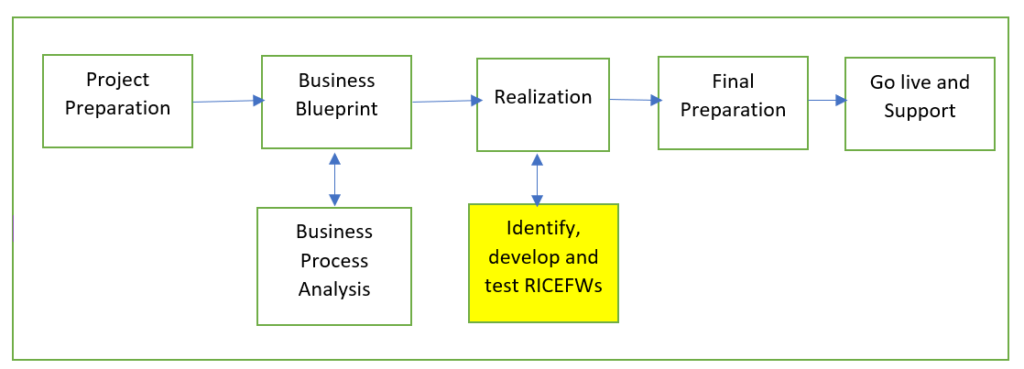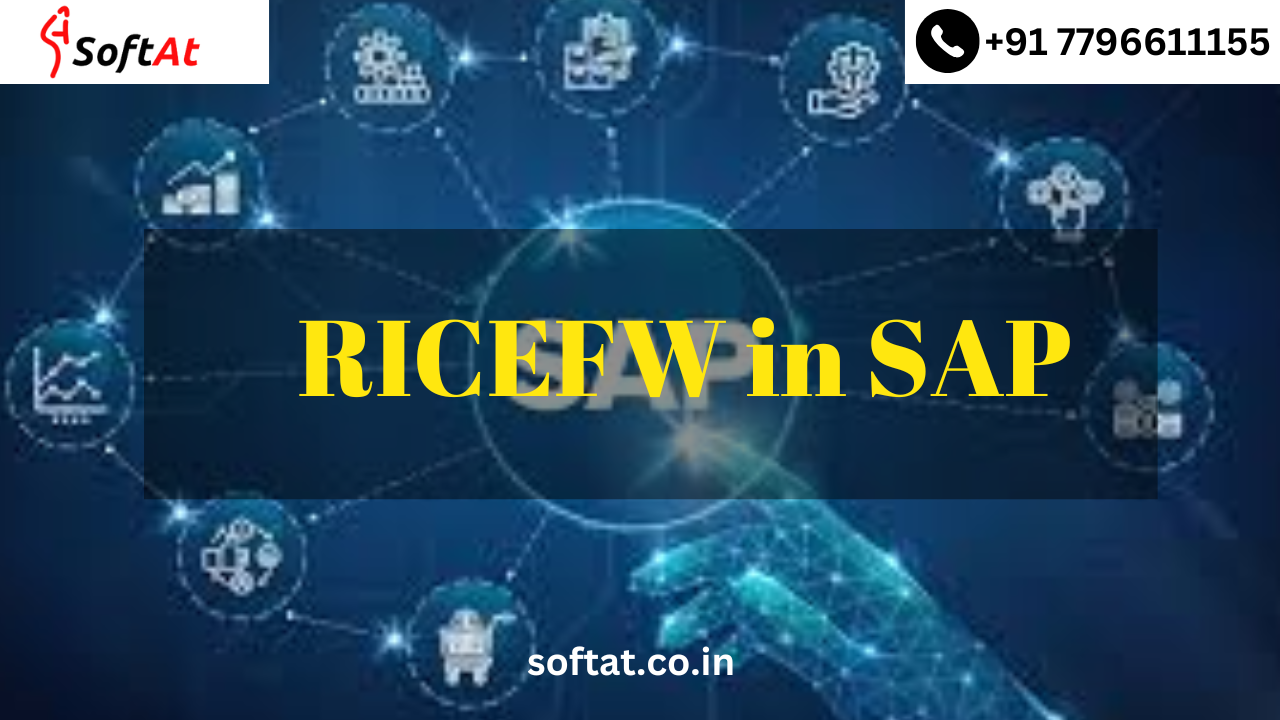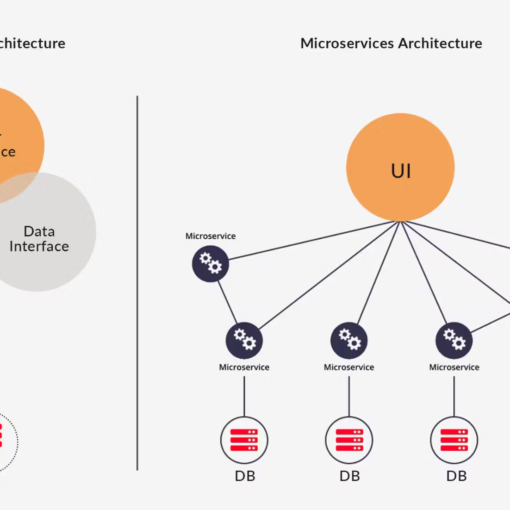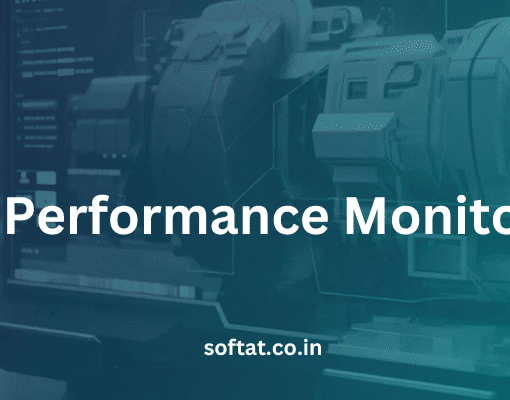RICEFW in SAP: A Comprehensive Guide to Understanding and Using SAP Customization Objects
In the realm of SAP (Frameworks, Applications, and Items in Information Handling), customization is a basic part that permits organizations to fit the framework to meet their novel requirements and cycles. One of the critical ideas in SAP customization is the term RICEFW. It alludes to a bunch of articles and devices utilized during a SAP execution or move up to make, change, or improve functionalities in the SAP framework. Understanding RICEFW is fundamental for SAP specialists, engineers, and venture supervisors dealing with SAP projects, as it gives an organized method for tending to customization prerequisites.
RICEFW stands for:
- R: Reports
- I: Interfaces
- C: Conversions
- E: Enhancements
- F: Forms
- W: Workflow
Together, these components address the critical areas of customization in a SAP framework. In this blog, we will bring a profound plunge into what every one of these parts implies, how they fit into the general SAP scene, and how they are utilized to address explicit business needs during a SAP execution or redesign project.

What is RICEFW in SAP?
RICEFW is an abbreviation that is usually utilized in SAP projects, particularly during the execution stage, to allude to different articles and cycles that are redone or made to upgrade or expand the usefulness of the SAP framework.
While SAP gives a large number of standard functionalities, associations frequently have explicit necessities that require further fitting. The components of RICEFW are utilized to address those issues without adjusting the center SAP framework, guaranteeing the arrangement stays steady, viable, and upgradeable. RICEFW customization empowers organizations to guarantee that SAP meets their specific functional cycles.
1.Reports (R)
Reports are one of the most widely recognized customization demands in a SAP framework. Revealing is a fundamental piece of any business as it assists associations with breaking down, track, and screen business execution and activities. Standard SAP reports are accessible for different modules (e.g., FI, MM, SD, PP), yet these may not completely meet the particular revealing prerequisites of an association.
Custom reports are much of the time made utilizing SAP’s ABAP (High level Business Application Programming) language or by utilizing different devices like SAP BusinessObjects, SAP Fiori, or SAP Gem Reports. These reports can pull information from different SAP tables and present it in a configuration custom fitted to the association’s necessities.
A few normal kinds of reports include:
- Monetary Reports: Benefit and misfortune explanations, asset reports, income reports, and so forth.
- Stock Reports: Stock levels, products development, and request status.
- Deals Reports: Client orders, deals execution, and estimating.Custom reports can likewise be planned to run occasionally and can be conveyed in various arrangements like PDF, Succeed, or even email warnings.
2.Interfaces (I)
Interfaces in SAP allude to the reconciliation focuses among SAP and outside frameworks. These connection points empower information trade among SAP and other programming applications, whether they are other venture frameworks (like CRM, SCM, or outsider frameworks), outer data sets, or inheritance frameworks.
There are two essential sorts of connection points in SAP:
Record based Connection points: Information is moved in documents (e.g., CSV, XML) between frameworks. These are normal while coordinating SAP with non-SAP frameworks that don’t have an immediate association.
Constant Connection points: These are utilized when the information should be moved progressively, frequently utilizing web administrations, APIs, or middleware stages like SAP PI/PO (Interaction Joining/Cycle Coordination), SAP CPI (Cloud Stage Mix), or IDocs (Transitional Records).
Instances of SAP interfaces include:
- ERP-to-CRM Points of interaction: Information trade between SAP ERP and client relationship the board (CRM) frameworks for client information, deals requests, and charging.
- SAP-to-Banking Points of interaction: sending installment guidelines or getting bank proclamations.
- SAP-to-Outer Assembling Frameworks: Imparting creation information to outside providers or subcontractors.Points of interaction are vital to guarantee that SAP works consistently with different frameworks inside an undertaking and with outside accomplices.
3.Conversions (C)
Changes allude to the relocation of information from heritage frameworks or outside sources into SAP during an execution, update, or framework progress. During a SAP project, a lot of information should be moved into SAP from different frameworks or configurations, like calculation sheets, data sets, or even manual information.
Information movement is in many cases one of the most perplexing parts of a SAP execution project on the grounds that the information should be cleaned, approved, and designed accurately prior to being moved into the new SAP framework.
Information change includes a few stages, for example,
- Information Extraction: Extricating information from heritage frameworks, records, or accounting sheets.
- Information Planning: Planning heritage information fields to comparing fields in SAP.
- Information Change: Changing over the information into the right organization expected by SAP.
- Information Stacking: Stacking the changed information into SAP utilizing instruments like LSMW (Inheritance Framework Movement Workbench), BAPIs (Business Application Programming Connection points), or IDocs.
Normal information transformations include:
Ace Information Transformation: Moving client, merchant, and material expert information.
Conditional Information Change: Relocating open requests, solicitations, and buy orders.
Verifiable Information Change: Relocating authentic exchange information (e.g., earlier years’ monetary information).
Legitimate information transformation is fundamental for guaranteeing a smooth change from heritage frameworks to Drain and guaranteeing information consistency across the framework.
4. Enhancements (E)
Improvements are custom advancements that broaden or upgrade the standard usefulness of SAP. SAP gives an adaptable structure to improvements, guaranteeing that these progressions don’t influence the center usefulness of the framework or make it challenging to update.
There are multiple ways of improving SAP usefulness:
Client Ways out: Predefined leave focuses in SAP where custom rationale can be added.
BADI (Business Add-Ins): Item situated upgrades that give an adaptable method for adding usefulness in SAP.
Custom Projects: Projects composed utilizing ABAP to meet explicit business needs that are not covered by standard SAP usefulness.
Improvement System: A bunch of devices and strategies to add custom rationale or conduct to standard SAP exchanges without changing the standard code.
Instances of upgrades include:
- Custom Estimating Rationale: Adding new evaluating conditions or limits to the deals request process.
- Extra Approval: Custom approval rationale during the buy request creation process.
- Detailing Upgrades: Custom reports or client explicit dashboards that pull information from standard SAP modules.
Upgrades are a fundamental piece of altering SAP to meet business-explicit prerequisites.
5.Forms (F)
Structures in SAP allude to print designs or archives that are utilized for various business cycles, for example, solicitations, buy orders, conveyance notes, and delivery names. While SAP gives standard structures to these cycles, organizations might require custom formats or plans to meet lawful necessities, marking, or explicit authoritative requirements.
SAP utilizes the Shrewd Structures and Adobe Structures devices to make modified structures. These structures are created to catch explicit data and present it in an organized and proficient configuration.
Instances of structures include:
- Receipt Structures: Modifying the design of receipt archives produced in the SAP framework.
- Buy Request Structures: Modifying the appearance and content of procurement orders shipped off merchants.
- Transporting Structures: Making conveyance notes and pressing records for the purpose of delivery.
Structures can be altered to incorporate organization logos, client explicit data, dynamic substance, and different components. They can likewise be incorporated into SAP work processes to be naturally produced during explicit business processes.
Workflows (W)
Work processes in SAP allude to the computerization of business cycles and assignments, guaranteeing that the ideal individuals are advised or actioned with flawless timing. Work processes are basic for smoothing out processes, guaranteeing consistency, and lessening manual mediation in undertakings like endorsements, warnings, and archive directing.
SAP Work process is a device used to plan, execute, and screen business work processes, giving a consistent method for overseeing errands across the association. It incorporates with different modules and can be modified to meet business-explicit necessities.
Normal SAP work processes include:
- Buy Request Endorsement Work process: Computerizing the endorsement cycle for buy orders in view of specific standards.
- Leave Solicitation Work process: Mechanizing the most common way of mentioning and endorsing representative leave.
- Receipt Endorsement Work process: Directing solicitations for endorsement in view of predefined business rules.
Work processes increment productivity as well as improve responsibility by following each move toward a cycle, guaranteeing that undertakings are finished on time.
Why RICEFW Matters in SAP Implementations
RICEFW objects assume a significant part in guaranteeing that SAP frameworks are completely redone and equipped for supporting an organization’s particular business processes. These customization objects give the adaptability to broaden the center SAP usefulness, incorporate SAP with different frameworks, and meet business-explicit necessities without compromising the framework’s respectability or upgradeability.
- Meeting Specific Business Needs
SAP is a strong venture asset arranging (ERP) device, however every business has novel cycles and prerequisites. RICEFW empowers associations to alter or stretch out SAP’s standard usefulness to meet these one of a kind requirements, guaranteeing that the framework upholds tasks productively and precisely. - Smooth System Integration
Numerous organizations use SAP close by other outsider frameworks, whether for client relationship the board (CRM), store network the executives (SCM), or HR the executives (HRM). RICEFW objects, particularly interfaces, assist with guaranteeing smooth information trade among SAP and these different frameworks, guaranteeing that all applications cooperate consistently. - Enhancing Business Productivity
Via computerizing business processes through work processes and smoothing out revealing through custom reports, organizations can increment efficiency, diminish manual mistakes, and further develop dynamic cycles. RICEFW empowers organizations to advance and mechanize key errands, opening up significant assets for additional essential drives.
Conclusion
RICEFW in SAP represents a critical set of tools and objects used to customize, extend, and optimize SAP systems to meet the specific needs of an organization. From creating custom reports and forms to enhancing workflows and interfaces, RICEFW enables businesses to ensure that SAP aligns with their unique processes and supports their overall operational goals. Understanding RICEFW is essential for SAP professionals involved in implementation, upgrade, or customization projects, as it provides the foundation for making SAP truly work for the organization.
By leveraging the power of RICEFW, businesses can maximize the value of their SAP investment and achieve greater efficiency, productivity, and integration across their enterprise systems.
You may be interested in:
A Deep Dive into SAP API Management
Integration cloud system to HANA Cloud Platform using Cloud Connector





